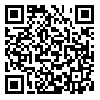
International Journal of Industrial Engineering & Production Research
Iran University of Science & Technology
Mon, Apr 28, 2025
[Archive]
Volume 36, Issue 1 (IJIEPR 2025)
IJIEPR 2025, 36(1): 99-115 |
Back to browse issues page
Download citation:
BibTeX | RIS | EndNote | Medlars | ProCite | Reference Manager | RefWorks
Send citation to:



BibTeX | RIS | EndNote | Medlars | ProCite | Reference Manager | RefWorks
Send citation to:
dadehbeigi M, taherinezhad A, alinezhad A. A Hybrid Methodology of Data Science and Decision Making Techniques: Lessons from COVID-19 Pandemic Management. IJIEPR 2025; 36 (1) :99-115
URL: http://ijiepr.iust.ac.ir/article-1-2095-en.html
URL: http://ijiepr.iust.ac.ir/article-1-2095-en.html
1- MSc Graduate, Department of Industrial Engineering, Faculty of Industrial and MechanicalEngineering, Qazvin branch, Islamic Azad University, Qazvin, Iran
2- PhD Candidate, Department of Industrial Engineering, Faculty of Industrial and MechanicalEngineering, Qazvin branch, Islamic Azad University, Qazvin, Iran
3- Associate Professor, Department of Industrial Engineering, Faculty of Industrial andMechanical Engineering, Qazvin branch, Islamic Azad University, Qazvin, Iran ,alalinezhad@gmail.com
2- PhD Candidate, Department of Industrial Engineering, Faculty of Industrial and MechanicalEngineering, Qazvin branch, Islamic Azad University, Qazvin, Iran
3- Associate Professor, Department of Industrial Engineering, Faculty of Industrial andMechanical Engineering, Qazvin branch, Islamic Azad University, Qazvin, Iran ,
Abstract: (473 Views)
Today, data mining and machine learning are recognized as tools for extracting knowledge from large datasets with diverse characteristics. With the increasing volume and complexity of information in various fields, decision-making has become more challenging for managers and decision-making units. Data Envelopment Analysis (DEA) is a tool that aids managers in measuring the efficiency of the units under their supervision. Another challenge for managers involves selecting and ranking options based on specific criteria. Choosing an appropriate multi-criteria decision-making (MCDM) technique is crucial in such cases. With the spread of COVID-19 and the significant financial, economic, and human losses it caused, data mining has once again played a role in improving outcomes, predicting trends, and reducing these losses by identifying patterns in the data. This paper aims to assess and predict the efficiency of countries in preventing and treating COVID-19 by combining DEA and MCDM models with machine learning models. By evaluating decision-making units and utilizing available data, decision-makers are better equipped to make effective decisions in this area. Computational results are presented in detail and discussed in depth.
Keywords: Data Mining, Machine Learning, Data Envelopment Analysis, Multi-Criteria DecisionMaking, COVID-19.
Type of Study: Research |
Subject:
Application of Computer in I.E
Received: 2024/08/20 | Accepted: 2025/01/18 | Published: 2025/03/30
Received: 2024/08/20 | Accepted: 2025/01/18 | Published: 2025/03/30
Send email to the article author
| Rights and permissions | |
 | This work is licensed under a Creative Commons Attribution-NonCommercial 4.0 International License. |




